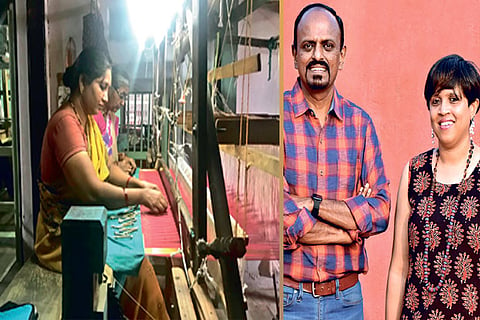

Chennai
As we celebrate National Handloom Day on August 7, we take a look at how the handloom industry is surviving in Tamil Nadu and how can we promote handloom as a mainstream business. Jawahar Singh and Kalaivani Sadagopan started Avishya to democratise access to the timeless style and beauty of India’s handloom fabrics and handcrafted products.
“An average Kancheepuram weaver can weave 2 or 4 sarees a month. Each saree will get a wage of about Rs 3,000 or Rs 4,000. These sarees will be priced somewhere between Rs 15,000-20,000 in the market. But the lockdown has impacted the livelihoods of many weavers in the state. Without a single business, they were struggling for survival. Throughout this period, we were supporting them in ways we can,” says Jawahar.
He opines that with sustainability becoming a life mantra for many, people are buying handloom products. “When compared to before, there is an increase in the awareness of buying handloom products. Though it is expensive, we have customers from all over the world who buy such products. Our mission is to bring out the beauty of Indian handloom and put us on a worldwide platform. Avishya creates a business proposition for weavers and we find a market for them to keep their business running throughout the year,” adds the entrepreneur.
Bessie Cecil, a Chennai-based textile historian, tells us that in the past years, handloom has evolved at different levels. “Handloom is part of our heritage and culture and it has got regional variations. Awareness among the general public is one of the ways to boost the handloom sector. And it has to start from childhood. Not only about the fabric, but people should also know the craft person/weaver behind a product. There will be a story to tell when there is a life attached to a product. In today’s scenario, handloom has to become a story for people to recognise and appreciate and that has to start from childhood. I believe handloom and handcraft have to be part of our education,” says Bessie.
Visit news.dtnext.in to explore our interactive epaper!
Download the DT Next app for more exciting features!
Click here for iOS
Click here for Android